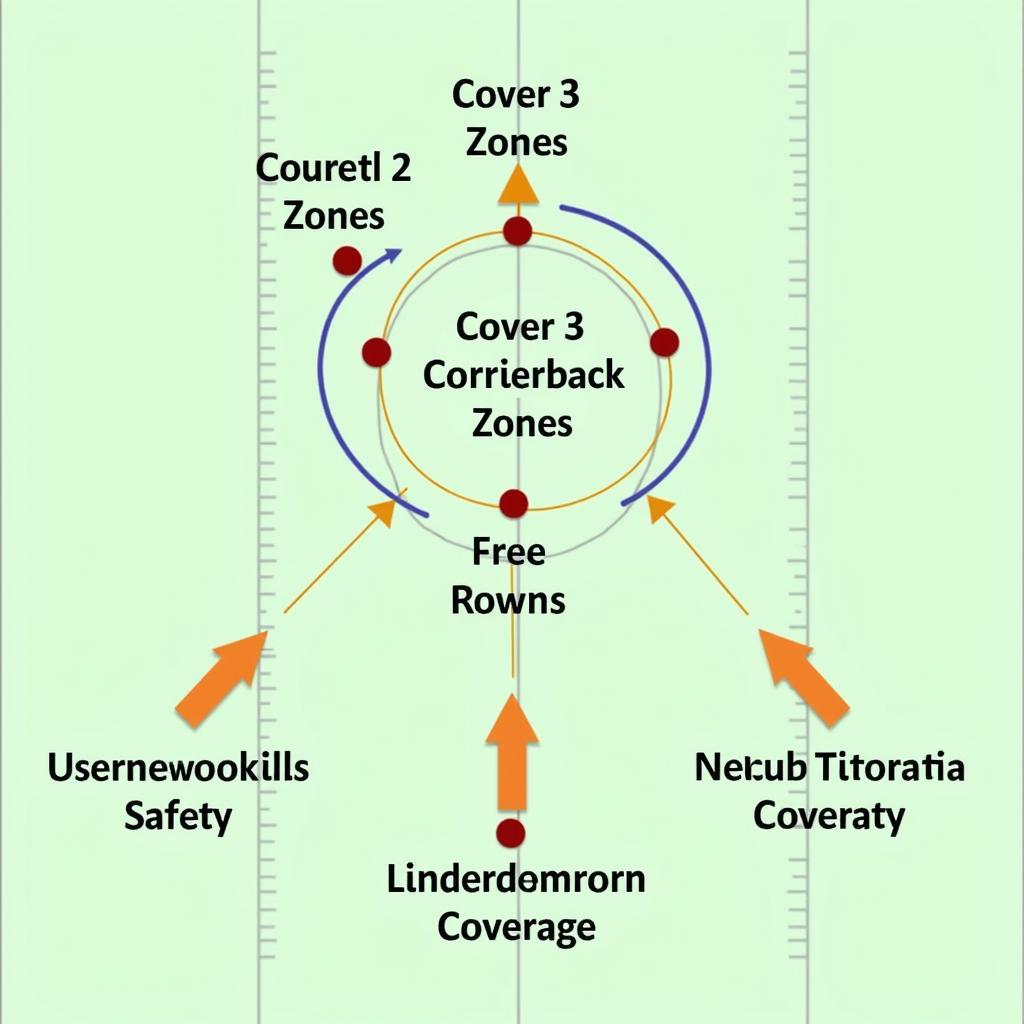In the thrilling world of American football, understanding defensive schemes is crucial for both players and fans. Two popular coverage schemes, Cover 3 and Cover 4, often leave enthusiasts wondering about their distinctions. This article delves into the intricacies of Cover 3 and Cover 4, highlighting their strengths, weaknesses, and when to employ each strategy effectively.
Deciphering Defensive Schemes: Cover 3 and Cover 4
Before dissecting the differences, it’s essential to grasp the fundamental concepts of zone coverage, which both Cover 3 and Cover 4 utilize. Unlike man-to-man coverage, where defenders shadow specific receivers, zone coverage assigns defenders responsibility for designated areas on the field.
Cover 3: A Three-Deep Zone
Cover 3, as the name suggests, employs three defensive backs to patrol the deep portion of the field, dividing it into three equal zones. Typically, two cornerbacks each cover an outside third, while the free safety handles the deep middle third. This setup effectively limits deep passes and forces the offense to rely on short or intermediate routes.
 Cover 3 Zone Defense
Cover 3 Zone Defense
Cover 4: A Four-Across Zone
Cover 4, also known as “Quarters,” utilizes four defensive backs to defend the deep zones. In this scheme, the field is divided into four equal sections, with two safeties and two cornerbacks each taking responsibility for one quarter. This coverage aims to eliminate big plays and force offenses to sustain long drives by stringing together short gains.
Strengths and Weaknesses: Comparing the Two Coverages
Cover 3: Strengths and Vulnerabilities
Cover 3’s strengths lie in its ability to prevent deep passes and force turnovers. With three defenders guarding the deep zones, it becomes challenging for offenses to complete long passes. However, Cover 3 is susceptible to well-executed short and intermediate routes.
Cover 4: Advantages and Disadvantages
Cover 4 excels at limiting big plays by providing ample deep coverage. However, it can be vulnerable to run plays due to fewer defenders near the line of scrimmage. Additionally, skilled quarterbacks can exploit the seams between zones in Cover 4.
Situational Usage: When to Employ Each Coverage
Cover 3: Ideal Scenarios
Cover 3 proves highly effective in situations where the defense aims to:
- Prevent deep passes: With three deep defenders, Cover 3 significantly reduces the likelihood of long completions.
- Force turnovers: The deep coverage allows defensive backs to anticipate throws and make plays on the ball.
- Pressure the quarterback: Cover 3 often involves blitzing linebackers, putting pressure on the quarterback to make quick decisions.
Cover 4: Strategic Implementations
Cover 4 becomes the preferred choice when the defensive strategy focuses on:
- Limiting big plays: The four-deep coverage makes it challenging for receivers to get behind the defense.
- Defending against the pass: Cover 4 is particularly effective against offenses that rely heavily on the passing game.
- Controlling the tempo: By forcing offenses to rely on short gains, Cover 4 allows the defense to dictate the pace of the game.
Cover 3 vs. Cover 4: A Matter of Strategy
Choosing between Cover 3 and Cover 4 depends on various factors, including the opponent’s offensive tendencies, the down and distance, and the overall game situation.
Ultimately, the effectiveness of any coverage scheme hinges on the players’ execution and the coaches’ ability to make real-time adjustments based on the flow of the game.
FAQs
What is the main difference between Cover 3 and Cover 4?
The primary difference lies in the number of deep defenders. Cover 3 utilizes three deep defenders, while Cover 4 employs four.
Which coverage is better, Cover 3 or Cover 4?
There’s no definitive “better” coverage. The optimal choice depends on the game situation and the strengths and weaknesses of both the offense and defense.
Can Cover 3 and Cover 4 be used interchangeably?
While both are zone coverages, they have distinct characteristics. Coaches typically choose one based on their defensive game plan and the opponent’s offensive tendencies.
Need more insights into football strategies? Check out our articles on Madden 24 Hacks and Onana FIFA 23 for a deeper dive into the world of virtual football.
For any assistance or queries, please don’t hesitate to reach out to us. Contact us at:
Phone Number: 0902476650
Email: [email protected]
Address: 139 Đ. Võ Văn Kiệt, Hoà Long, Bà Rịa, Bà Rịa – Vũng Tàu, Việt Nam
Our dedicated customer support team is available 24/7 to assist you.





